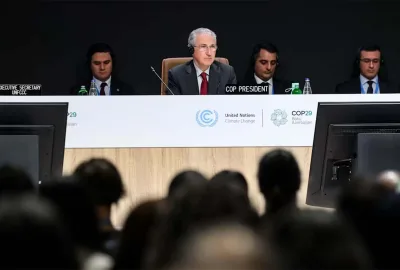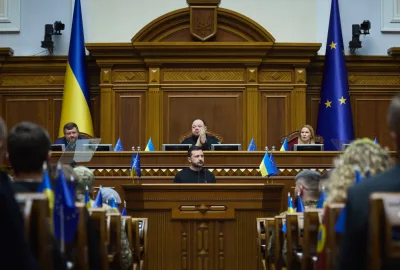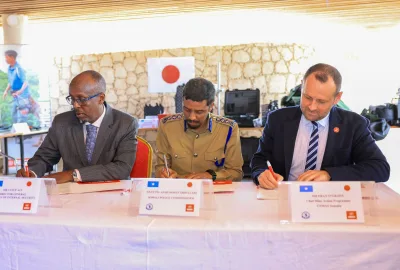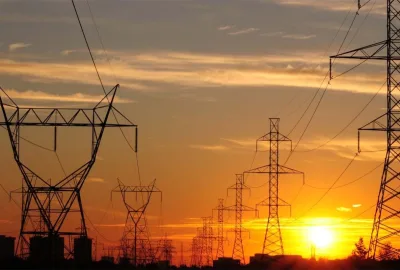By Liban Ahmad The coup d’état that brought Siyad Barre into power in 1969 is called…
By Liban Ahmad
The coup d’état that brought Siyad Barre into power in 1969 is called ‘ a bloodless revolution’. But his ouster was a bloodbath as a result of the violent war waged by armed opposition groups and the indiscriminate killings of civilians after state collapse. Some armed opposition groups took a leaf from the military dictatorship’s book and used large-scale violence against particular groups of civilians in the hope of trying to dominate the state. This is the core argument of Professor Lidwien Kapteijns, whose book, Clan Cleansing in Somalia: The Ruinous Legacy of 1991, was reviewed by Mohamed Haji Ingiriis in two 2013 publications. Ingiriis’ first review appeared in the autumn issue of the non-academic Journal of the Anglo-Somali Society; the second in the winter issue of Africa Today.
Apart from the name-calling that says more about the reviewer than the book’s author, Ingiriis asserts that Professor Kapteijns was biased in the respondents she consulted and that her book contains many factual and Somali spelling errors. It is striking that he never engages with the main arguments of the book; simply denying its rich source base and concealing its nuanced approach and careful contextualization. The errors he points out are mostly typos in the footnotes and do not distract from those arguments.
To begin with the issue of bias, Somalis are not divided on the abhorrence of human rights violations committed during the military dictatorship. They attribute responsibility for these large-scale human rights violations to the top leadership and lower-level supporters of the former regime. This is also clearly argued in Kapteijns’ book, which spends one whole chapter out of four on this period. However, Kapteijns’ book calls special attention to the purposeful clan-based atrocities perpetrated after the collapse of the regime in 1991, atrocities that have remained ignored, distorted and denied since that time, even by scholars. She calls what USC forces and civilian supporters did in Mogadishu and beyond in 1991-1992 a campaign of clan cleansing, a legal term referring to the use of atrocities to expel civilians of particular group backgrounds from an area to try to make that area ethnically homogeneous. According to Mr. Ingiriis, this set of events was just a part of what he calls colaadihii qabiilka (clan hostilities). There are two things Ingiriis does not understand or mention in this context.
First, Ingiriis fails to grasp or is hiding that Kapteijns’ book does not think in terms of whole clans as actors. She attributes the clan cleansing campaign by the USC (with help of other smaller clan-based fronts), not to all Hawiye people, some of whom, the book shows, actually were actually rescuers of targeted individuals. She argues that seeing Daarood and Hawiye as single actors, as Ingiriis does in his review, is precisely the kind of thinking that helped bring about clan cleansing. Note also that the author spends a good part of Chapter three to document the atrocities committed by clan-based militias against civilians outside of the clan cleansing campaign.
Second, Ingiriis fails to ask the moral question that lies at the heart of the subject of the book. If responsibility for laying the foundation for clan-based atrocities must be attributed to the Barre regime, must the USC leaders of the period after Barre’s fall not be held morally and politically accountable for the atrocities of the clan cleansing during which people of Daarood backgrounds were purposefully killed, maimed or dispossessed in Mogadishu and other territories brought under USC control but that also caused great harm and suffering to other Somalis, including people belonging to the Hawiye clan family?
While Kapteijns is the first scholar to use the term of clan cleansing campaign for the events of 1991-1992, she is not the only scholar to categorise the atrocities of 1991-1992 as systemic political violence, not clan hostilities (Ingiriis’ term). In the words of Prof. Abdi Samatar of February 1991:
“The break-down of central authority and the reactionary nature of USC leadership has led to the dispossession of all Mogadishu residents who were not Hawiye, and the massacre of anyone who was Darod by birth. This has generated and intensified communal strife and hatred, thus creating new unnecessary and formidable obstacles to reconciliation.” .
Prof. Ahmed Samatar has characterised the human rights violations committed by USC forces in Mogadishu as a “harrowing pogrom”. While Ingiriis simply declares Kapteijns’ conceptualization of this violence as clan cleansing not “a useful historical-theoretical term to understand tribal wars, let alone clan wars,” he never explains how she defines the term and why she felt compelled to adopt it. Moreover, he himself uses, without careful definition, the loaded term “Hargeisa Holocaust” for the military regime’s war crimes in the Northwest in 1988-1989.
This and other contradictions abound in Ingiriis’ attempt to distract from the real arguments in Clan Cleansing. Many of the “corrections” presented in the review are actually different interpretations and the corrections of typos and small errors are on several counts incorrect. Thus the reviewer wrongly puts Aadan Yabaal district in Lower Shabelle, misspells Wardhiigley, and wrongly corrects Kapteijns’ transliteration of the vocative in Ahmed Naji’s song “Xamar waa lagu xumeeyay”. (For the Somali grammar fiends, there is a difference between the grammatical form of the song’s title and a citation from the actual song lines in which Ahmed Naji not only conjugates the verb xumee ( to wrong) in the past tense but also uses it vocatively: “O Mogadishu, you have been wronged!” (“Xamar waa lagu xumeeyayeey”. In referring to Abdi Muhummed. Amiin’s song Caynaanka hay (“Keep the reins of power”), Ingiriis himself conjugates the verb vocatively – haay — instead of giving the singular imperative hay.) It is challenging to get Somali orthography right and most readers will agree that Kapteijns did a superb job in transliterating and translating Somali texts. Is criticising her accomplishment another way to distract from the book’s compelling and nuanced analysis of a very contested subject?
These days competition for victimhood is fierce in Somalia but Professor Kapteijns’ book does not promote clan-based blame-games and explicitly calls on Somalis not to indulge in their own clan-based narratives of victimization. Instead she insists on political accountability for those who purposefully used violence against civilians to reach their political goals. She focuses on the campaign of clan cleansing because it has been ignored and denied. If reviews such as those by Ingiriis prove anything it is that this denial is alive and well in many circles.
Perhaps Kapteijns’ book may help open the door to an open-minded public discussion of large-scale post-1990 human rights violations. It may help Somalis to pose moral questions about such violations impartially, that is to say, by holding all parties to the same standards, as Kapteijns does in her book. Sadly, Prof. Kapteijns’ work is unpalatable to reviewers such as Mr. Ingiriis who simply blame the messenger for the message, continue the denial of the atrocities of 1991-1992, and insist on defending and associating themselves with the perpetrators of the atrocities that are the subject of the book.
By Liban Ahmad
Liban1999@gmail.com
Horseed Media accepts opinion articles about a subject, the Op-Ed section. All entries must be original and exclusive to Horseed Media. We do not consider that the articles already published on another website, so you do not submit an article that you have already sent elsewhere. Please do not send your articles in PDF format. More info Click here







